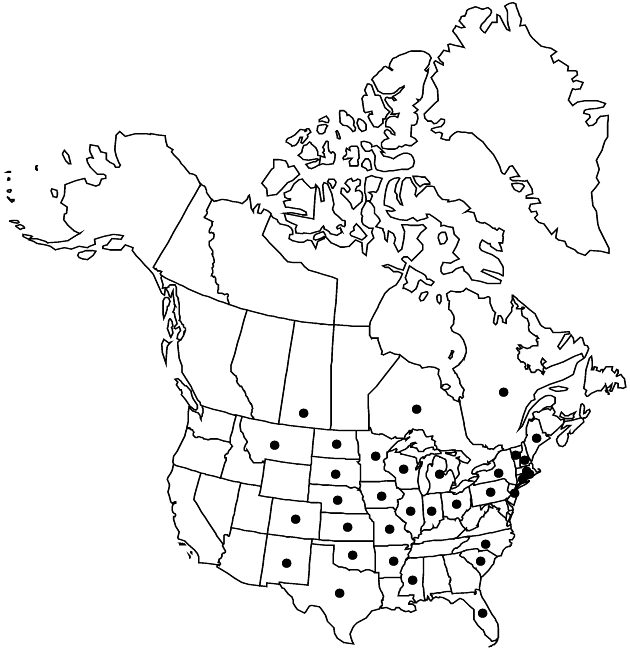familyAsteraceae
genusArtemisia
subgenusArtemisia subg. Drancunculus
speciesArtemisia campestris
subspeciesArtemisia campestris subsp. caudata
Artemisia campestris subsp. caudata
Publ. Carnegie Inst. Wash. 326: 122. 1923.
Common names: Armoise caudée
Endemic
Basionym: Artemisia caudata Michaux Fl. Bor.-Amer. 2: 129. 1803
Synonyms: Artemisia forwoodii A. Gray
Biennials, 20–80(–150) cm. Stems usually 1. Leaves: basal rosettes not persistent (faces green and glabrous or sparsely white-pubescent). Heads in arrays 12–30(–35) × 1–8(–12) cm. Involucres turbinate, 2–3 × 2–3 mm.
Phenology: Flowering early–late summer.
Habitat: Open meadows, usually moist soils, sometimes sandy or rocky habitats
Elevation: 10–1000 m
Distribution

Ont., Que., Sask., Ark., Colo., Conn., Fla., Ill., Ind., Iowa, Kans., Maine, Mass., Mich., Minn., Miss., Mo., Mont., Nebr., N.H., N.J., N.Mex., N.Y., N.C., N.Dak., Ohio, Okla., Pa., R.I., S.C., S.Dak., Tex., Vt., Wis.
Discussion
A population of Artemisia campestris found in Massachusetts differs from populations of subsp. caudata by its smaller heads and multiple branched stems. That population is typical of subsp. campestris, formerly believed to be restricted to Europe.
Selected References
None.
Lower Taxa
None.